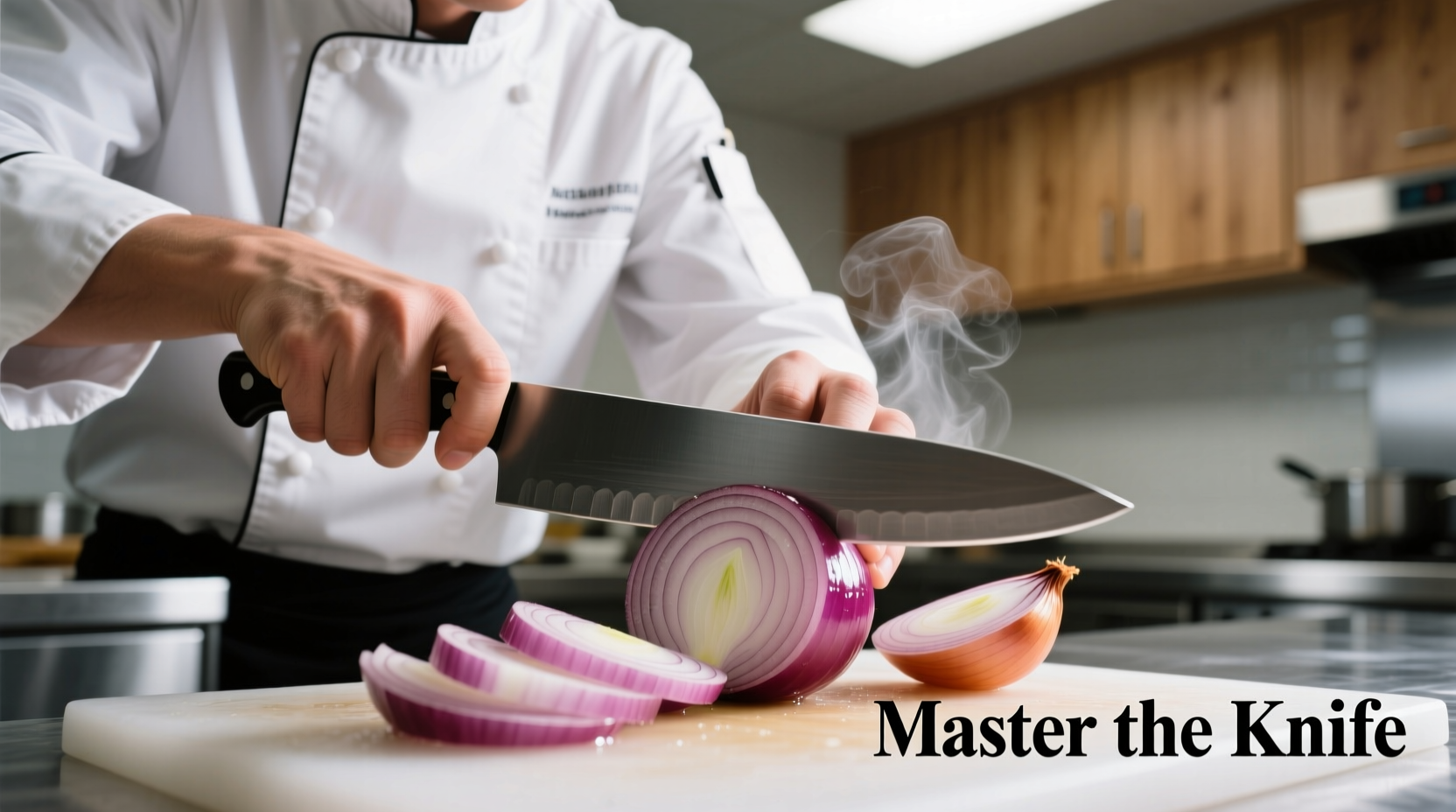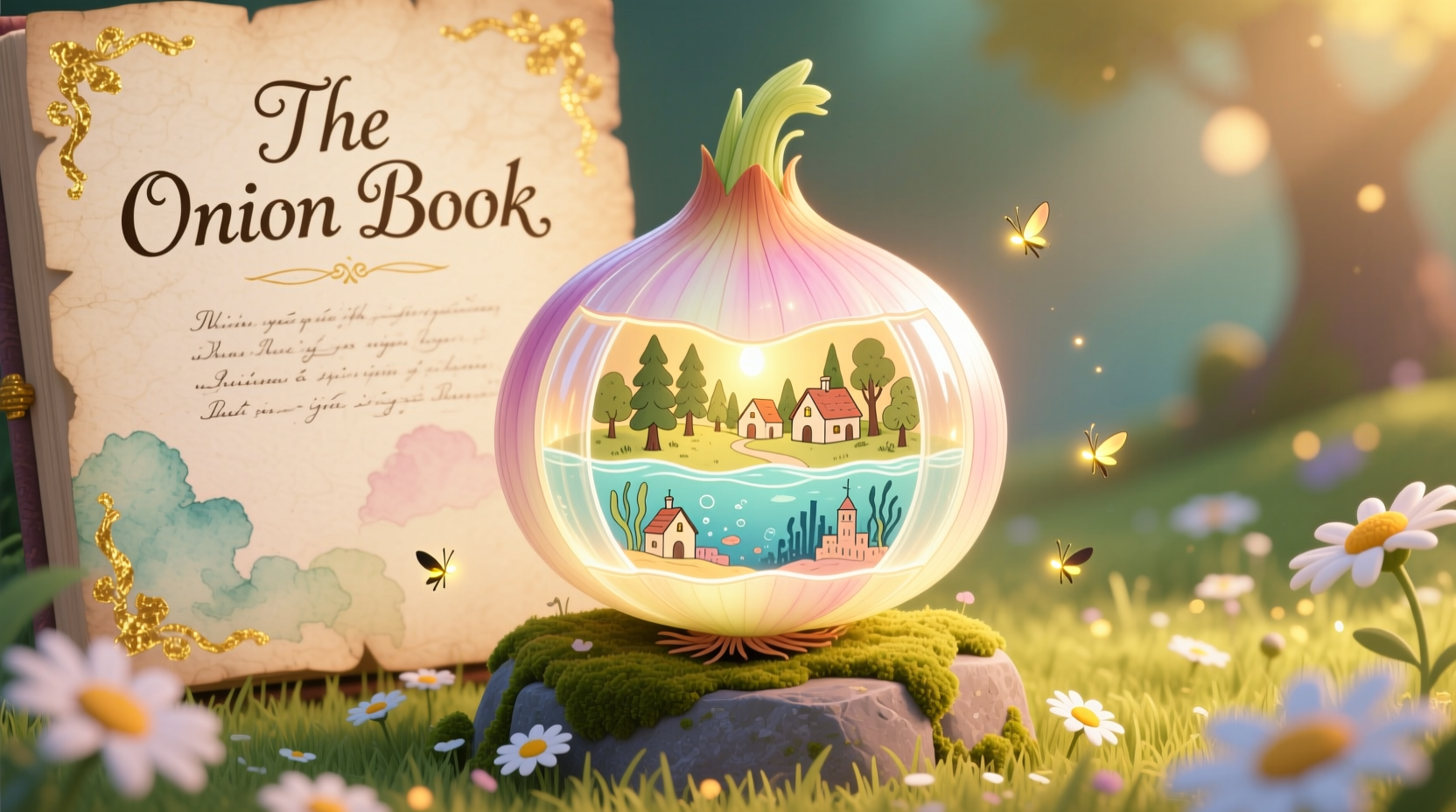If you're searching for the onion book, you've found the definitive culinary resource exploring all aspects of onions in cooking. This comprehensive guide covers onion varieties, preparation techniques, flavor chemistry, and historical significance - transforming how home cooks and professionals utilize this essential kitchen staple.
Onions form the aromatic foundation of countless global cuisines, yet most home cooks barely scratch the surface of their potential. The Onion Book changes that by providing scientifically-backed techniques and culturally rich context that elevates this humble allium from mere background ingredient to culinary star.
Why Onions Deserve Their Own Dedicated Guide
Despite being one of the USDA's most consumed vegetables worldwide, onions remain misunderstood by many home cooks. The science behind onion chemistry explains why proper handling makes or breaks dishes:
- Enzymatic reactions create both desirable sweetness and unpleasant bitterness
- Temperature control determines whether onions caramelize or burn
- Cutting techniques directly impact flavor intensity and cooking time
- Storage conditions affect shelf life and pungency levels
The Onion Book demystifies these processes through practical demonstrations anyone can implement immediately. Unlike generic cooking resources, this specialized guide addresses the specific challenges home cooks face when working with different onion varieties.
Onion Varieties Decoded: Choosing the Right Allium
Not all onions serve the same purpose. This critical comparison helps you select the perfect variety for your culinary needs:
| Onion Type | Best Uses | Sweetness Level | Storage Duration |
|---|---|---|---|
| Yellow Onions | Caramelizing, roasting, soups | Moderate | 2-3 months |
| Red Onions | Salads, salsas, pickling | Mild | 3-4 weeks |
| White Onions | Mexican cuisine, grilling | Sharp | 1-2 months |
| Shallots | Vinaigrettes, delicate sauces | Sweet | 1 month |
| Green Onions | Garnishes, stir-fries | Mild | 1 week |
This comparison aligns with USDA agricultural research on allium varieties and their optimal culinary applications. Understanding these differences prevents common mistakes like using sweet Vidalias in dishes requiring sharp flavor profiles.
Mastering Onion Preparation Techniques
The Onion Book provides step-by-step guidance for perfect onion preparation every time:
Knife Skills That Make a Difference
How you cut onions directly impacts flavor release and cooking behavior:
- Vertical cuts (with the grain): Milder flavor, holds shape better for salads
- Horizontal cuts (across the grain): Maximum flavor release for soups and sauces
- Dice size consistency: Ensures even cooking and professional results
The Science of Caramelization
True caramelization requires precise temperature control. The book reveals the exact heat ranges for different onion varieties:
- Start with medium-low heat (275-300°F) for 10 minutes
- Gradually increase to 325°F while stirring occasionally
- Add pinch of salt to draw out moisture
- Include small sugar amount (1/4 tsp per onion) to accelerate browning
- Finish with splash of vinegar to balance sweetness

Avoiding Common Onion Mistakes
Even experienced cooks make these preventable errors:
- Using onions straight from refrigeration: Cold temperatures mute flavor compounds
- Overcrowding the pan: Creates steam instead of proper browning
- Adding salt too early: Draws out moisture preventing caramelization
- Using dull knives: Crushes cells releasing excessive enzymes causing bitterness
The Onion Book addresses these issues with specific timing recommendations and equipment suggestions that produce consistently better results.
Historical Context: Onions Through Culinary History
Understanding onion's journey through culinary history reveals why certain preparation methods evolved:
- 3500 BCE: Earliest documented onion cultivation in ancient Egypt
- 1st Century CE: Roman cookbook De Re Coquinaria features 17 onion recipes
- 16th Century: Onions reach North America via European colonists
- 1800s: Industrialization enables large-scale onion production
- 1930s: Development of sweet onion varieties like Vidalia
- Present Day: Global onion production exceeds 95 million tons annually
This historical perspective, verified through USDA National Agricultural Library archives, explains regional preparation differences that persist in modern cooking.
Practical Applications for Home Cooks
Implement these immediately actionable techniques from The Onion Book:
Perfect Onion Rings Every Time
The book's tested method solves common problems:
- Soak slices in buttermilk for 30 minutes to reduce bitterness
- Use cake flour instead of all-purpose for lighter coating
- Maintain oil temperature at exactly 365°F
- Double-fry technique for maximum crispness
Building Flavor Foundations
Professional chefs use these onion-based bases:
- Soffritto (Italian): Equal parts onion, carrot, celery
- Mirepoix (French): 2 parts onion, 1 part carrot, 1 part celery
- Trinity (Cajun): Equal parts onion, celery, bell pepper
Each ratio creates distinctly different flavor profiles essential to regional cuisines.
How The Onion Book Stands Apart
Unlike general cooking resources, this specialized guide provides depth impossible in broader culinary texts:
- Detailed chemical breakdown of flavor compounds in different varieties
- Temperature-specific cooking charts for precise results
- Regional usage patterns documented through culinary anthropology
- Storage solutions tested across multiple climate conditions
- Step-by-step photography showing critical technique details
The book's practical approach transforms theoretical knowledge into immediately applicable kitchen skills, making it invaluable for both novice cooks and professional chefs seeking to master this essential ingredient.
Implementing Onion Knowledge in Your Cooking
Start applying these principles today with this simple progression:
- Identify which onion varieties you currently use most often
- Experiment with one new preparation technique from the book
- Track flavor differences in your dishes using specific descriptors
- Gradually expand to different varieties based on recipe requirements
- Refine timing and temperature based on your specific cooking equipment
This systematic approach prevents overwhelm while delivering noticeable improvements in your cooking results.











 浙公网安备
33010002000092号
浙公网安备
33010002000092号 浙B2-20120091-4
浙B2-20120091-4